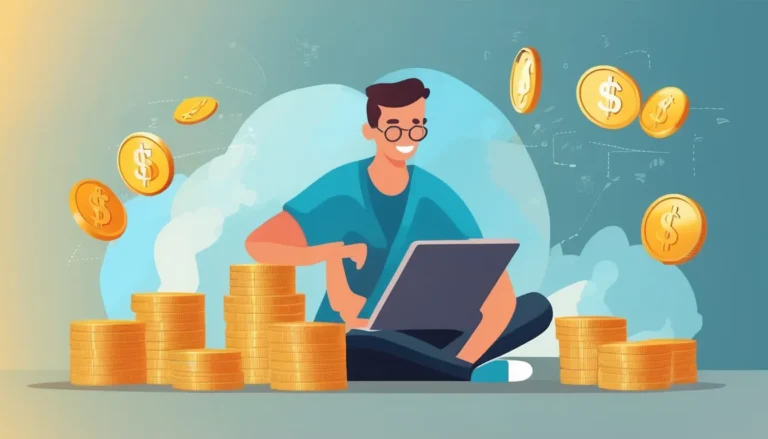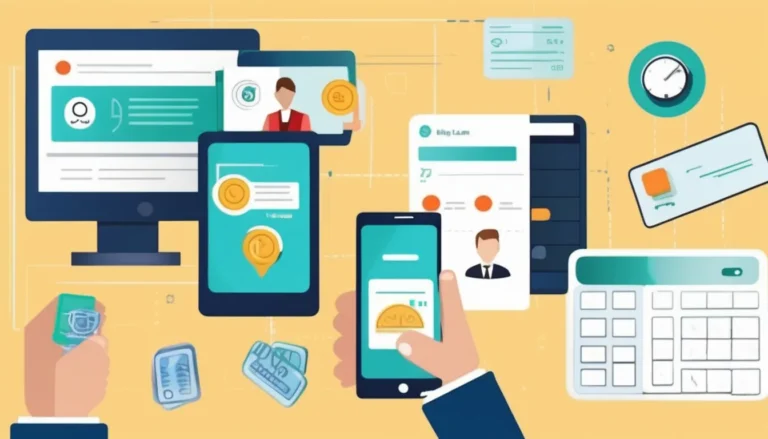How to Qualify for a Personal Loan in 2025: Tips and Strategies

Personal loans are a versatile financial tool that can be used for a variety of purposes such as consolidating debt, funding home improvements, or covering unexpected expenses. In 2025, the lending landscape is evolving, with changes in regulations, interest rates, and borrowing options. For anyone looking to qualify for a personal loan in the USA, understanding the eligibility requirements and strategies to improve approval chances is crucial. This article will outline tips and strategies to help you qualify for a personal loan in 2025.
1. Understand What Lenders Look for in 2025
Before applying for a personal loan, it’s essential to know what lenders look for in potential borrowers. While the specifics can vary depending on the lender, there are common factors that are universally considered when evaluating loan applications:
Credit Score
Your credit score remains one of the most important factors in qualifying for a personal loan. In 2025, lenders will continue to use credit scores as a benchmark for assessing the risk associated with lending you money. A higher score indicates a lower risk, which may lead to better loan terms, such as lower interest rates and higher loan limits.
- Excellent Credit (750+): You’ll likely have the best loan terms.
- Good Credit (700–749): You’re likely to qualify with competitive rates.
- Fair Credit (650–699): You may still qualify, but with higher rates and stricter terms.
- Poor Credit (below 650): It may be challenging to qualify, but there are options such as secured loans or loans for bad credit.
Income and Employment History
Lenders want to know that you have a stable income source to repay the loan. A steady job or consistent self-employment income demonstrates your ability to manage your finances and meet loan obligations. In 2025, lenders may also look for job security, so longer tenure with an employer or consistent self-employment history can work in your favor.
Generally, lenders expect you to earn enough income to cover both the loan repayment and your existing debt. To improve your chances of approval, ensure that your debt-to-income ratio is within a reasonable range (typically under 40%).
Debt-to-Income Ratio (DTI)
Your DTI ratio measures how much of your monthly income goes toward paying off existing debts. A high DTI suggests that you might have trouble making loan payments, which could hurt your chances of approval. Lenders prefer applicants with a DTI ratio of 36% or lower. You can lower your DTI ratio by paying off debts or increasing your income.
Collateral (Secured vs. Unsecured Loans)
Personal loans can be secured or unsecured. A secured loan requires collateral (such as a car or savings account) to back the loan, which reduces the lender’s risk. If you don’t repay, the lender can seize the collateral. On the other hand, unsecured loans do not require collateral but may come with higher interest rates due to the increased risk for the lender.
In 2025, many lenders still offer unsecured personal loans, but you may need to have an excellent credit score to secure favorable terms without collateral.
2. Strengthen Your Financial Profile Before Applying
If your credit score, income, or other factors aren’t where they need to be for loan approval, there are several strategies you can employ to strengthen your financial profile before applying for a personal loan:
Improve Your Credit Score
- Pay Bills on Time: Your payment history is one of the most significant factors affecting your credit score. Set up automatic payments or reminders to ensure you never miss a due date.
- Reduce Debt Balances: Paying down existing credit card balances can lower your credit utilization ratio and improve your credit score. Aim to keep your credit utilization under 30%.
- Dispute Errors: Check your credit reports for any errors or inaccuracies and dispute them with the credit bureaus. Correcting these errors can raise your score.
- Consider a Credit Builder Loan: If you have a low score, consider using a credit builder loan to help improve it. These small loans are designed to help individuals build or repair their credit history.
Increase Your Income
Lenders want to see that you have a stable and sufficient income to cover loan repayments. To increase your chances of loan approval:
- Ask for a Raise: If you’ve been in your current job for a while, consider asking for a raise.
- Take a Side Job: Starting a side hustle or freelance work can increase your overall income.
- Find Passive Income Sources: Renting out property, selling products online, or investing in dividend-paying stocks can help generate additional income streams.
Pay Down Existing Debt
As mentioned earlier, a lower debt-to-income ratio can improve your loan eligibility. Consider paying off high-interest debt, such as credit cards, to reduce your overall debt load and make it easier to qualify for a personal loan.
Save for a Larger Down Payment (If Applicable)
If you’re applying for a secured personal loan, having a larger down payment or more valuable collateral can improve your chances of approval. This shows the lender that you’re financially responsible and committed to repaying the loan.
3. Shop Around for the Best Loan Offers
Once your financial profile is in good shape, the next step is to shop around for the best personal loan offers. In 2025, online lenders, credit unions, and traditional banks all offer personal loans. Each of these lending sources may have different qualification criteria, interest rates, and repayment terms.
Compare Interest Rates and Fees
Interest rates vary depending on your creditworthiness and the type of loan you’re applying for. Secured loans typically have lower rates, but unsecured loans may be more convenient if you don’t have collateral. Make sure to compare interest rates, as even a small difference in rates can result in significant savings over the life of the loan.
Also, be mindful of any additional fees, such as:
- Origination Fees: A fee for processing the loan application.
- Prepayment Penalties: Fees charged for paying off the loan early.
- Late Fees: Fees for missing a payment.
Check the Loan Terms
Loan terms include the length of the loan (typically 1 to 5 years), repayment schedule, and any conditions that may apply. Shorter loan terms usually come with higher monthly payments but lower interest rates, while longer terms may have more manageable payments but higher total interest costs.
Prequalify to Check Your Chances
Many lenders offer a prequalification process that allows you to check if you’re likely to qualify for a loan without affecting your credit score. This can help you compare loan offers and choose the best one for your financial situation.
4. Apply for the Loan
Once you’ve chosen the lender and loan offer that best suits your needs, it’s time to apply. Here are the key steps to follow when submitting your application:
Gather Necessary Documents
You’ll need to provide documentation that verifies your income, employment, identity, and financial history. Common documents required include:
- Proof of income (pay stubs, tax returns, or bank statements)
- Proof of identity (driver’s license, Social Security number, or passport)
- Proof of address (utility bill or lease agreement)
- Proof of employment (recent pay stubs or employer verification)
Submit Your Application
Fill out the loan application with accurate and complete information. Some lenders may ask for additional documentation or clarification, so be prepared to provide whatever is needed.
Review the Loan Agreement
Before signing the loan agreement, carefully review the terms, including the interest rate, fees, repayment schedule, and any penalties. Make sure you understand the full cost of the loan and that you can afford the monthly payments.
5. Consider Alternative Options if You Don’t Qualify
If you’re unable to qualify for a personal loan in 2025, there are still options available to access funds. Some alternatives include:
- Secured Loans: If your credit score is too low, consider offering collateral for a secured loan.
- Co-Signer: Having a co-signer with better credit can increase your chances of approval and secure better loan terms.
- Peer-to-Peer Lending: Online platforms allow individuals to borrow from other individuals, sometimes at better rates than traditional lenders.
- Credit Union Loans: Credit unions may be more lenient in their lending requirements and offer lower rates than banks.
Conclusion
Qualifying for a personal loan in 2025 requires careful preparation and a solid understanding of what lenders are looking for. By improving your credit score, managing your debt-to-income ratio, shopping around for the best offers, and ensuring you meet the necessary financial requirements, you can increase your chances of approval. Personal loans can be an invaluable tool when used wisely, so be sure to make the most of your financial potential and select a loan that aligns with your goals.




